Save Energy at Home – Grow Room Tips
With the cost of electricity on everyone’s mind, we all want to know how to save energy at home. However, we still want to keep growing indoors, and achieve amazing yields.
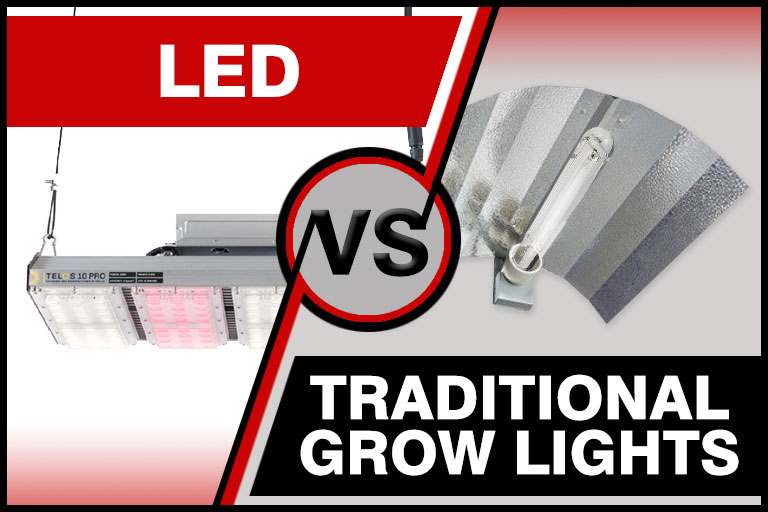
There are few better places to invest your “energy saving” money than in LED grow lights. LEDs are a specialised version of the energy saving light bulbs most of us use at home. They produce a full light spectrum, are more efficient, and give enhanced output per kWh of energy used versus traditional filament lighting.
This short blog aims to highlight how to save energy at home with products and tips for grow room energy saving. Carry on reading this article for some golden power saving tips.
Overview – How To Save Energy At Home
Over the course of this blog we aim to cover a year (4x 12-week cycles). This article uses the average electricity unit cost for electricity bills in November 2022. The data highlights the obvious benefits from switching to an LED grow light from traditional HID lights. Doing this, you’ll save more than enough energy at home to pay for that LED grow light that you’ve always wanted, but not been able to justify the outlay for – until now.
Do LED Grow Lights Use Less Electricity?
LED grow light technology offers you vastly improved growing efficiencies. Comparing PAR for PAR, LED grow lights use less electricity. This blog highlights the widening gap of running costs and shows you how to save energy at home, using them in your grow tent. When you compare grow lights power use, it’s difficult to create an argument against the best grow lights in the UK being LED grow lights.
Do LED Grow Lights Need a Ballast?
LED grow lights don’t need a ballast. LED grow lights have their power packs designed in to them. The start-up current and general power draw is much lower than comparable HID grow lights.
Running Costs Breakdown – LED Grow Light Vs. HPS Grow Lamps
The table below shows how to save energy at home and the savings on offer. This example uses a Telos 10 Pro Mesh LED grow light versus a 600W HPS light and magnetic ballast.
Garden tip: You can buy around 9x full 600W magnetic ballast grow light kits for the cost of a single LED, but the performance is lower and running costs are higher, as the following tables highlight.
The following data highlights how to save energy at home. These findings are eye-opening. They highlight that buying the best LED grow light you can afford now, is a much more cost-effective, and efficient method of growing plants indoors.
The following tables show how LEDs can provide a more efficient PAR light to your plants, requiring roughly half the power.
LEDs, like the Telos 10 Pro Mesh exhibit a much higher efficiency with half the power demand. The table below should be more than enough to show you the value of making the investment in LED grow lights.
How To Save Energy At Home With LED Grow Lighting
The technology in the Telos 10 LED offers greater energy efficiency versus a 600W HPS lamp and magnetic ballast. LEDs also run cooler, offering the ability to get closer to the canopy. This means you’ll get more bang for your buck and gain the ability to get heavier yields.
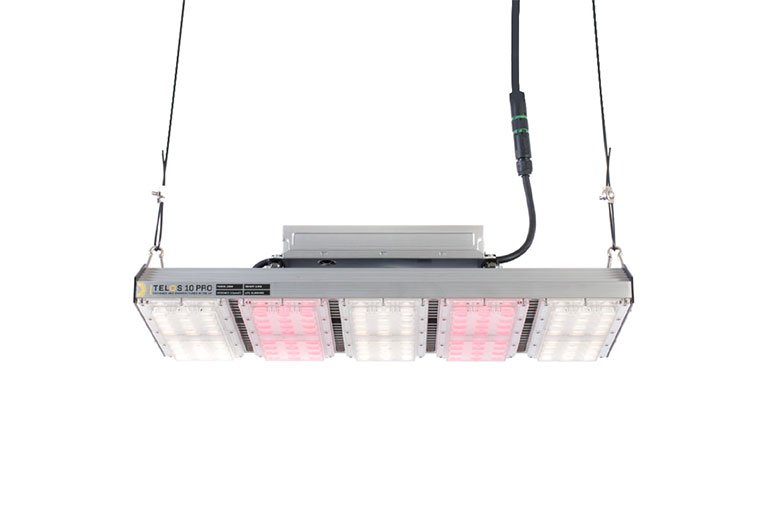
Magnetic ballasts have a much larger current draw at light’s on. They’ll pull from 3.5 to 4A, which means you can’t safely use more than 2 or 3 lights from a single 13A plug socket.
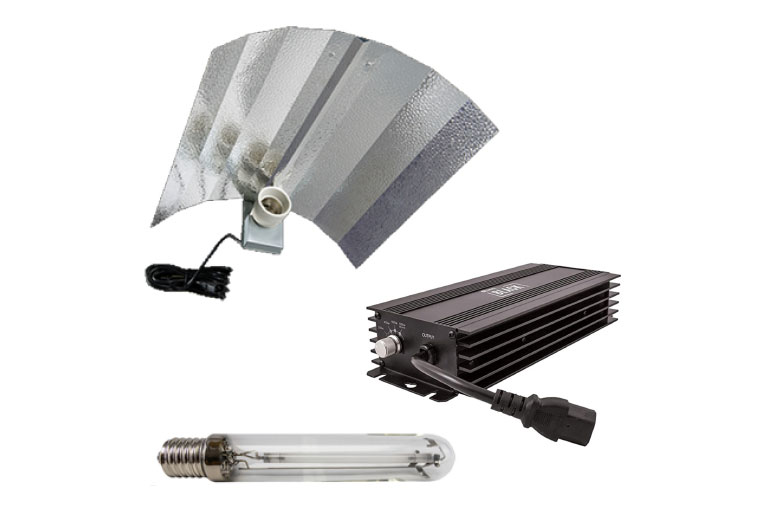
Garden tip: LEDs don’t have the same startup current demand.
Grow Light Energy Costs Breakdown
All costs are based on the following values:
- The annual use of 4 x growth cycles (28 x 18hrs (504 hours veg) + 56 x 12hrs (672 hours flowering) = 1176 hours
- *Based on the Energy Price Guarantee Oct’ 2022 = 34p per unit
- HPS running costs and suggested consumables replacements (lamps + reflector)
600W HPS Magnetic Ballast vs. Telos 10 Pro Mesh LED
| Variable | HPS Lighting | LED Lighting |
|---|---|---|
| 1 x 600W HPS (magnetic) | 1x Telos 10 Pro Mesh LED | |
| Power draw | 660W | 320W |
| Electricity costs* | £1055.04 | £440.16 |
| Replacement reflectors | 1 x £11.45 | na |
| Replacement lamps | 3 x £14.95 = £44.85 | na |
| Total running costs | £1111.34 | £512.96 |
| Total saving = up to £598.38 |
The below table compares the typical power use and PAR rating for popular grow lights.
| Telos 8 Pro Mesh | Telos 10 Pro Mesh | 600W, 240V HPS (Magnetic) | 600W, 400V HPS (Digital) | 750W, 400V HPS | 1000W, 400V HPS | |
| Power draw | 240W | 320W | 660W | 636W | 795W | 1060W |
| µmol / joule PAR light per Watt, per second | 2.4 | 2.5 | 1.2 | 1.6 | 1.6 | 1.6 |
| Total PPF total PAR light, per second | 504 | 744 (µmols) | 792 | 1017.6 | 1272 | 1696 |
| CRI | 86 | 86 | 24 | 24 | 24 | 24 |
| Spectrum | 3000K | 3000K | 2100k | 2100k | 2100k | 2100k |
3 More Money Saving Tips To Save Energy At Home For Indoor Hydroponic Grow Tents
We’ll only touch on a few more points here and link to another blog post on saving money in your grow room. Click the following link to read: “Build The Ultimate Low Power Grow Tent For Indoor Plants“.
1. Use EC Fans
EC fans and controllers are one of the easiest energy saving tips to make. They’re unbelievably cheap to run, move more air than AC fans and, when used with an EC controller, use less power.
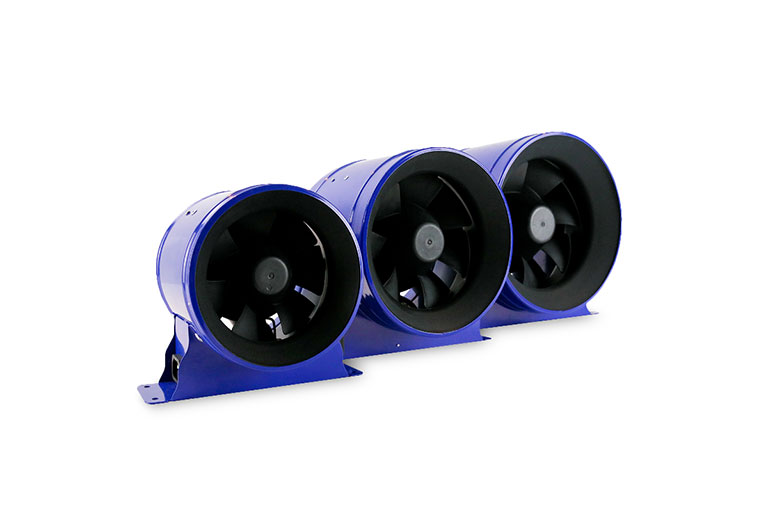
People often ask: “How much electricity does a fan use?”. The amount of electricity a fan uses all depends on the type of fan you’re using. We’ve highlighted the difference between EC and AC fans below:
- AC fans draw the same amount of power regardless of the speed you run them at, even if you slow them down to 1%.
- EC fans operate on a linear basis, this means they use much less power at slower speeds. For example, at 1% speed, they use approximately 1% power. EC fans also use less power and move more air than AC fans.
The following table highlights the difference in energy use of EC fans vs AC fans. And don’t forget the improved performance for the same sized fans.
| Speed % | AC Fan | EC Fan |
|---|---|---|
| RVK 200 A1 | Phresh Hyperfan V2 200mm/8″ EC Fan | |
| At 100% speed | 104W | 95W |
| At 80% speed | 104W | 76W |
| At 50% speed | 104W | 48W |
| At 30% speed | 104W | 29W |
| At 10% speed | 104W | 9.5W |
2. Always Over Spec To Save Energy At Home
By overspecifying your grow room equipment, then over time, it works out to cost less to run your equipment on a lower setting compared to having them running full out all the time.
For example, if you use a 3kW Lighthouse Greenhouse Heater, in a smaller grow room or grow tent, you’ll benefit from quicker heating. You’ll also benefit from the fan heater helping to control the humidity in the room.
Garden tip: Growing with LED grow lights can result in humidity levels increasing versus using traditional HID grow lights. LEDs don’t produce the heat that HID (HPS/CMH) grow lights do, so the humidity levels can be higher than you’re perhaps used to. Using the 3kW Lighthouse Greenhouse heater can lower the humidity in the air as it passes over the heating element, helping to control humidity levels, when needed.
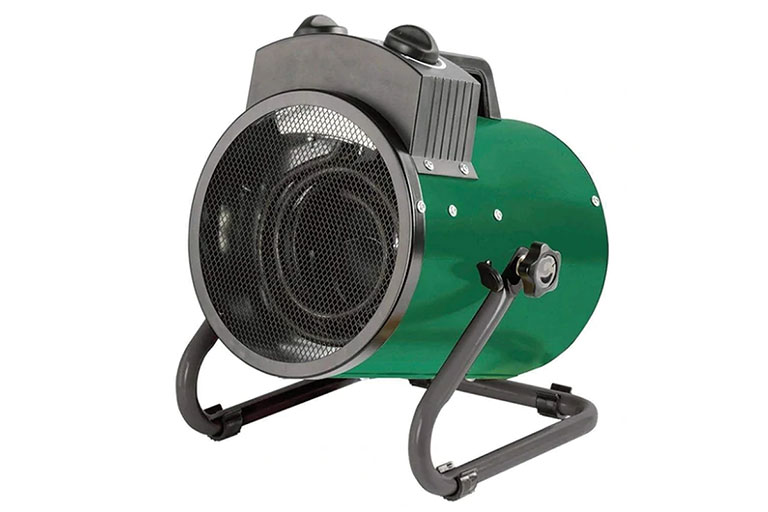
The 3kW Lighthouse Greenhouse Heater has an inbuilt thermostat, which means you can set it and forget it. An over specified greenhouse heater will use less energy as it won’t need to run for long.
The powerful 3kW output means it can quickly and effectively heat up large grow spaces. Being over specified also allows you to reach and preserve the desired temperature quicker. This allows your plants to thrive in a consistent environment.
3. Keep Heat Generating Items Outside Your Tent In Summer
Anything that emits heat during a hot spell causes your fans to work harder. In summer, it’s a good idea to keep lighting ballasts, nutrient chillers and anything else that exchanges or emits heat, outside your grow room.
What Can I Do To Heat My Grow Tent In Colder Weather?
Cold weather means you’ll likely need to add a source of heat to counter problems with condensation. Condensation is a major threat to the health of your plants. Low wattage tube heaters are a great source of low-cost heat. If you want to combat a condensation issue, use one or more tube heaters. Set the heaters to come on 15 minutes before lights out to compensate for the loss of heat when the lights go out.
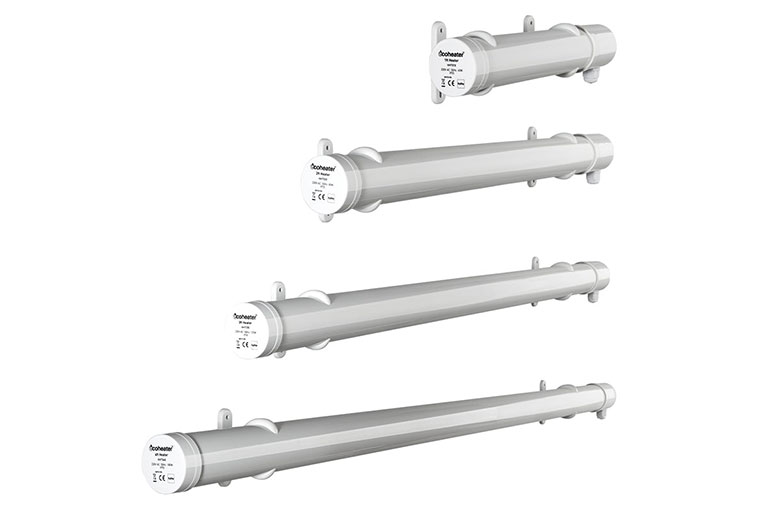
Pair tube heaters with positioning your grow tent in an area less prone to the cold. Grow tents are best placed in a stable environment to avoid condensation forming with the exchange of warm air from inside the grow tent condensing on the walls, with a cold outside temperature.
If you want more energy saving ideas for your indoor grow room or grow tent, read our blog: 8 Top Tips: Build The Ultimate Energy Saving Grow Tent For Indoor Plants.




